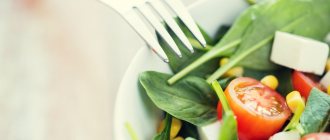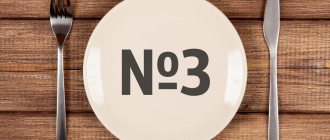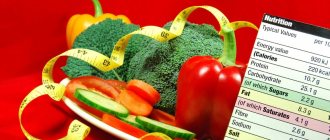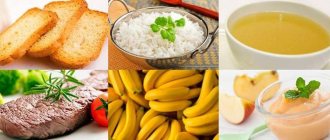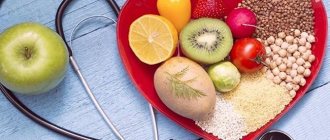It involves several dietary changes aimed at slowing the spread of cancer cells in the body. Although proponents claim the diet is an effective way to fight cancer, it is highly controversial and has little scientific research to back it up.
This article explores the potential benefits and side effects of Johanna Budwig's diet to help determine whether she is fighting cancer.
What is the Johanna Budwig Diet?
The Budwig diet was developed in the 1950s by German researcher Dr. Johanna Budwig. It was designed to improve cell function to reduce the growth and spread of cancer cells.
The diet plan involves consuming several servings of cottage cheese and flaxseed oil daily, as well as other foods such as fruits and vegetables. Meanwhile, it eliminates the consumption of sugar, refined grains, processed meats and other processed foods ().
Although the diet was originally aimed at preventing cancer, its proponents claim it improves other aspects of health, including immune function, arthritis and heart health.
However, a lack of research means its effect on cancer is largely unknown.
Summary:
Originally developed in the 1950s, the Johanna Budwig Diet requires you to eat several servings of flaxseed oil and cottage cheese per day. You should also limit your consumption of processed and refined foods.
Fatty, but very healthy
Budwig managed to publish a number of scientific articles in which she proved the importance of omega-3 and omega-6 acids for metabolism . In her opinion, they help saturate tissues with oxygen, which prevents the development of a cancerous tumor. Conversely, trans fats, saturated fatty acids, and refined oils, in her opinion, are harmful because they lack this function.
Joanna Budwig developed the ideas of Nobel laureate Otto Warburg, who was the first to draw attention to the role of cellular respiration. It was he who proved that in the presence of oxygen, harmful microorganisms die.
Joanna’s words became famous: “Without fatty acids, the enzymes that ensure the absorption of oxygen in the respiratory system do not function. A person begins to suffocate even in air enriched with oxygen.”
By the way, our body cannot produce unsaturated fatty acids, and therefore it is important to get them from food.
How does the diet work?
According to Johanna Budwig, eating plenty of polyunsaturated fats from foods like flaxseed oil and cottage cheese can help slow the growth and spread of cancer cells ().
Therefore, people on a diet eat a mixture of flaxseed oil, cottage cheese and honey several times a day. Typically, this “Budwig mixture” is made from cottage cheese and flaxseed oil in a 2:1 ratio, as well as a small amount of honey.
It is recommended to eat at least 60 ml of flaxseed oil and 115 grams of cottage cheese daily. This mixture should be prepared fresh for each meal and eaten within 20 minutes.
High-fiber foods, including fruits and vegetables, are also recommended.
Conversely, you should avoid sugar, processed grains, processed meats and other processed foods.
As well as adjusting your diet, you should spend at least 20 minutes outside every day, which is thought to help stimulate immune function and increase vitamin D levels.
Additionally, to get maximum benefits, you are advised to follow the diet for at least 5 years.
Summary:
According to Johanna Budwig, the diet she developed helps slow down the growth of cancer cells by increasing the consumption of polyunsaturated fats and high-fiber fruits and vegetables.
Fully or partially limited products
In Joanna Budwig's diet you should limit:
- Red meat and all meat products made from it (sausages, smoked meats), especially fried.
- All foods containing saturated fat.
- Canned products, pickles, marinades, semi-finished meat products, fast food, products containing food additives (dyes, flavor enhancers, preservatives).
- Seafood (shrimp, crab, oysters).
- Hard-boiled chicken eggs, fresh white bread, pasta, baked goods.
- Sugar, artificial sweeteners and products containing it in large quantities: confectionery, jam, ice cream, baked goods, creams, factory juices, sweet carbonated drinks, cakes, candies, pastries, breakfast cereals.
- Carbonated drinks with preservatives and coffee made from beans are excluded from drinks.
Table of prohibited products
| Proteins, g | Fats, g | Carbohydrates, g | Calories, kcal | |
Vegetables and greens | ||||
| canned vegetables | 1,5 | 0,2 | 5,5 | 30 |
| white radish | 1,4 | 0,0 | 4,1 | 21 |
| celery (root) | 1,3 | 0,3 | 6,5 | 32 |
| horseradish | 3,2 | 0,4 | 10,5 | 56 |
| garlic | 6,5 | 0,5 | 29,9 | 143 |
Fruits | ||||
| grapefruit | 0,7 | 0,2 | 6,5 | 29 |
| plums | 0,8 | 0,3 | 9,6 | 42 |
Berries | ||||
| gooseberry | 0,7 | 0,2 | 12,0 | 43 |
| currant | 1,0 | 0,4 | 7,5 | 43 |
Mushrooms | ||||
| mushrooms | 3,5 | 2,0 | 2,5 | 30 |
Cereals and porridges | ||||
| white boiled rice | 2,2 | 0,5 | 24,9 | 116 |
Flour and pasta | ||||
| pasta | 10,4 | 1,1 | 69,7 | 337 |
| noodles | 12,0 | 3,7 | 60,1 | 322 |
| vareniki | 7,6 | 2,3 | 18,7 | 155 |
| dumplings | 11,9 | 12,4 | 29,0 | 275 |
Bakery products | ||||
| wheat bread | 8,1 | 1,0 | 48,8 | 242 |
Confectionery | ||||
| pastry cream | 0,2 | 26,0 | 16,5 | 300 |
| cookie | 7,5 | 11,8 | 74,9 | 417 |
| butter cookies | 10,4 | 5,2 | 76,8 | 458 |
| shortbread dough | 6,5 | 21,6 | 49,9 | 403 |
Cakes | ||||
| cake | 4,4 | 23,4 | 45,2 | 407 |
Chocolate | ||||
| chocolate | 5,4 | 35,3 | 56,5 | 544 |
Raw materials and seasonings | ||||
| seasonings | 7,0 | 1,9 | 26,0 | 149 |
| mayonnaise | 2,4 | 67,0 | 3,9 | 627 |
| sugar | 0,0 | 0,0 | 99,7 | 398 |
| salt | 0,0 | 0,0 | 0,0 | — |
Dairy | ||||
| dairy products | 3,2 | 6,5 | 4,1 | 117 |
| condensed milk | 7,2 | 8,5 | 56,0 | 320 |
| cream 35% (fat) | 2,5 | 35,0 | 3,0 | 337 |
| sour cream | 2,8 | 20,0 | 3,2 | 206 |
Meat products | ||||
| fatty pork | 11,4 | 49,3 | 0,0 | 489 |
| salo | 2,4 | 89,0 | 0,0 | 797 |
| beef | 18,9 | 19,4 | 0,0 | 187 |
| bacon | 23,0 | 45,0 | 0,0 | 500 |
Sausages | ||||
| smoked sausage | 9,9 | 63,2 | 0,3 | 608 |
Bird | ||||
| fried chicken | 26,0 | 12,0 | 0,0 | 210 |
| smoked chicken | 27,5 | 8,2 | 0,0 | 184 |
| smoked duck | 19,0 | 28,4 | 0,0 | 337 |
Eggs | ||||
| hard-boiled chicken eggs | 12,9 | 11,6 | 0,8 | 160 |
Fish and seafood | ||||
| smoked fish | 26,8 | 9,9 | 0,0 | 196 |
| canned fish | 17,5 | 2,0 | 0,0 | 88 |
Oils and fats | ||||
| creamy margarine | 0,5 | 82,0 | 0,0 | 745 |
| cooking fat | 0,0 | 99,7 | 0,0 | 897 |
| rendered pork fat | 0,0 | 99,6 | 0,0 | 896 |
Non-alcoholic drinks | ||||
| bread kvass | 0,2 | 0,0 | 5,2 | 27 |
| black coffee | 0,2 | 0,0 | 0,3 | 2 |
| sprite | 0,1 | 0,0 | 7,0 | 29 |
| tonic | 0,0 | 0,0 | 8,3 | 34 |
| Fanta | 0,0 | 0,0 | 11,7 | 48 |
| * data is per 100 g of product | ||||
Is the Budwig diet good for your health?
The Johanna Budwig Diet favors unprocessed whole foods such as fruits and vegetables, which are rich in important nutrients such as vitamins, minerals and antioxidants.
Some studies have linked increased consumption of fruits and vegetables to a lower risk of certain types of cancer (,).
Although no research has been done on Budwig blend, test tube and animal studies have shown that flaxseed oil may have anti-cancer properties (, ,).
For example, a 40-day study in mice showed that administration of 0.3 ml of flaxseed oil reduced the formation of lung tumors ().
Flaxseed oil is also rich in heart-healthy omega-3 fatty acids, which may help reduce inflammation, lower blood pressure, and protect against heart disease (,).
Additionally, the Budwig Diet eliminates processed foods, including processed foods, refined grains, and junk foods.
Notably, one study linked a 10% increase in highly processed food intake to a 10% increase in overall cancer risk—and breast cancer risk in particular ().
What's more, eating processed meats is associated with a higher risk of developing heart disease, diabetes, and some types of cancer ().
Summary:
The Johanna Budwig Diet eliminates processed foods and meats while encouraging the consumption of fruits, vegetables and flaxseed oil, which can help prevent cancer and improve overall health.
Healthier than fish oil
There are articles on the Internet that say that all natural vegetable oils are effective against cancer, but the author of this method used only flaxseed oil. Budwig has proven that this oil is twice as rich in valuable substances as fish oil! In addition, it has an optimal combination of omega-3 and omega-6 .
She repeated that it is impossible to make distortions in the use of one type of fatty acids. If you consume a lot of meat, your joints may hurt because it contains an excess of arachidonic acid (an omega-6), and such a diet provokes arthritis. Its excess in the body is one of the factors of inflammation. Balancing fatty acids will help keep your skeletal system healthy. And this is where flax seeds, which contain omega-3, will provide an invaluable service. Taking them regularly will help you avoid cancer.
However, the seeds sold in Russia vary greatly in their benefits. The explanation is simple: there are two subspecies of common flax: curly and long. And if the first one is bred to produce oil, then the long one is produced to produce fabrics. The amount of nutrients in its seeds is minimal.
Flax seeds of the "VNIIMK 620" , which is grown, have an optimal ratio of omega-3, omega-6 and omega-9 (7:1:3). But in technical varieties, low-value omega-9 acid predominates. Therefore, choose your product carefully, remember that curly flax is the most valued. Its seeds can be identified by their appearance - they are smaller than those of the long tree.
Possible disadvantages
Before you begin this meal plan, you should consider the many potential downsides of the Johanna Budwig Diet.
Not enough research
The biggest drawback of the Budwig diet is the lack of clinical studies to evaluate its effectiveness.
In fact, most of the available evidence about the Budwig diet is purely anecdotal. Therefore, it is difficult to determine whether this diet affects cancer.
Although certain aspects of diet can help reduce your risk of this disease and improve your overall health, you should never consider it—or any other diet—as the primary treatment for cancer.
Additionally, some options include unsafe methods such as coffee enemas, which involve injecting coffee into the rectum.
Coffee enemas are associated with several serious side effects, including skin burns, electrolyte imbalances, and inflammation of the rectum and colon ().
May cause nutritional deficiencies
The Johanna Budwig Diet is a restrictive eating plan that eliminates many food groups.
Although meat is not completely prohibited, some types are allowed only in limited quantities.
Meat, fish, and poultry are rich in several important nutrients, including protein, iron, zinc, and B vitamins. If you don't get these nutrients from other sources, you may increase your risk of nutritional deficiencies ().
In fact, research suggests that vegans and vegetarians may have a higher risk of iron, vitamin B12, protein, and calcium deficiencies ().
Additionally, because the diet is very restrictive, it can promote weight loss, which can be dangerous for people with cancer.
People with cancer are in a hypermetabolic state, meaning their overall caloric and protein needs increase. If proper nutrient intake is not maintained, which is common with restrictive diets such as the Budwig Diet, it can lead to weight loss, muscle wasting, or cachexia ().
In addition, people with cancer may lose their appetite and be able to tolerate only certain foods, so restrictive diets are not usually recommended for cancer treatment unless prescribed and monitored by a cancer treatment team ().
Although this diet is not recommended for cancer treatment, if you decide to follow it or any other diet, it is important to make sure you eat a variety of nutrient-rich foods. Additionally, to fill any gaps in your diet, consider also taking additional nutrients in the form of supplements.
Contains large amounts of linseed oil
Johanna Budwig's diet involves consuming large amounts of flaxseed oil.
This oil may cause digestive problems and diarrhea in some people ().
It is also not recommended to consume a lot of flaxseed oil if you are pregnant, breastfeeding, or taking medications to lower your blood sugar ().
Flax seeds may also interact with other medications, so it is important to talk to your doctor before increasing your flaxseed oil intake, especially if you are taking any medications or have any underlying medical conditions ().
Summary:
The Johanna Budwig diet has not been studied in any clinical studies and is based on anecdotal evidence. It also contains high amounts of flaxseed oil and is very restrictive, which can cause nutritional deficiencies.
Joanna Budwig - a genius without a big name
There are few women in history as well educated and devoted to science as Johanna (Johanna) Budwig. In 1936 she graduated from the Institute of Pharmacy and Chemical Technology of the University of Münster. Here she defended her doctoral dissertation in natural sciences. Received a doctorate in physics. Later, having taken up the issue of maintaining health, she studied to become a doctor.
Since 1951, Budwig worked for the German Federal Health Administration. Her responsibilities included oversight of pharmaceuticals and food products. In 1952, she conducted several experiments that proved the harm of trans fats included in margarine.
But its main achievement is proof of the existence of polyunsaturated fatty acids, about which science then had little understanding. Joanna created a classification of these substances, which she determined using her own paper chromatography .
Budwig made a breakthrough in biochemistry, but her work was not appreciated. She stated in the press that a diet focusing on polyunsaturated acids can stop cancer. She became a candidate for the Nobel Prize seven times, but without results. The margarine industry in Germany was booming after the war, and the discovery of a talented scientist went against commerce. Medicine and pharmaceuticals were also not happy about the appearance of such an affordable treatment.
This brave woman has repeatedly received accusations of charlatanism. But all legal disputes were resolved in her favor, because she relied on solid knowledge and the results of her own research. However, medical institutions were in no hurry to cooperate with her, which prevented clinical studies of their method.
Cliff Beckwith, who was treated for prostate cancer under Joanna's guidance, recalled that more than a thousand patients defeated the most dangerous disease with the help of the mentioned diet. It was possible to help even many patients in advanced condition.
The scientist’s life itself confirms the effectiveness of this healing system. She died in 2003 at the age of 95.
Foods to Eat and Avoid
Johanna Budwig's diet limits many foods while encouraging others.
What foods should you eat?
The Budwig mixture, consisting of flaxseed oil, cottage cheese and honey, is a key component of the diet.
Although other types of dairy products, such as yogurt, are sometimes used in place of cottage cheese, flaxseed oil is essential in this mixture.
Here are other foods recommended for the Budwig diet:
- Fruits : apples, oranges, bananas, berries, kiwi, mangoes, peaches and plums
- Vegetables : broccoli, cabbage, cucumbers, tomatoes, carrots, kale and spinach
- Legumes : lentils, beans, chickpeas and peas
- Fruit juices : grape, apple, grapefruit and pineapple
- Nuts and seeds : almonds, walnuts, pistachios, chia seeds, flax seeds and hemp seeds
- Dairy products : yogurt, cottage cheese, goat's milk and raw cow's milk
- Oils : flaxseed and olive oil
- Drinks : herbal tea, green tea and water
Foods to Avoid
Processed foods, added sugars (except honey), refined grains and hydrogenated fats are all prohibited on the Budwig Diet.
While many meats, fish, poultry and eggs from backyard chickens are allowed in small quantities, pork, shellfish and processed meats are prohibited.
Here are the main foods to avoid on the Budwig diet:
- Meat and seafood : pork and shellfish
- Processed meats : bacon, sausages, prepared foods
- Refined grains : pasta, white bread, crackers, chips and white rice
- Sugar : table sugar, brown sugar, molasses, agave and corn syrup
- Soy products : tofu, tempeh, soy milk, edamame and soybeans
- Fats and oils : margarine, butter and hydrogenated vegetable oil
- Processed foods : cookies, baked goods, French fries, snacks, fast food and candy
Summary:
The Johanna Budwig Diet recommends that you eat several servings of flaxseed oil and cottage cheese, as well as high-fiber foods such as fruits and vegetables. Processed foods, sugar and refined grains are prohibited.
Authorized Products
Joanna Budwig's diet should include:
- Wholemeal bread/grain bread, crispbread, millet porridge, unpolished brown rice, buckwheat kernels.
- Cold pressed oil (linseed, olive, sunflower, grape seed, hemp).
- Poultry (chicken/turkey), rabbit meat.
- Low-fat fish (perch, carp, cod, hake, flounder, halibut, herring, pike, mackerel, sardines, mullet, bream, trout).
- Vegetables in the form of salads of broccoli, carrots, zucchini, tomatoes, cucumbers, cauliflower, beets, beets, asparagus, eggplant, kohlrabi, garden greens, seasoned with vegetable oil, as well as freshly prepared juices from them.
- Nuts of various types, seeds (flax, sesame) and seeds (pumpkin sunflower), wheat germ, kelp, dried fruits, bee products, seaweed.
- Ripe fruits/berries (apples, pears, apricots, grapes, mangoes, tangerines, strawberries, raspberries, peaches, melons, bananas) and their juices.
- Drinks include green/herbal tea, still mineral water.
Table of permitted products
| Proteins, g | Fats, g | Carbohydrates, g | Calories, kcal | |
Vegetables and greens | ||||
| peas | 6,0 | 0,0 | 9,0 | 60 |
| Brussels sprouts | 4,8 | 0,0 | 8,0 | 43 |
| boiled cauliflower | 1,8 | 0,3 | 4,0 | 29 |
| boiled potatoes | 2,0 | 0,4 | 16,7 | 82 |
| boiled carrots | 0,8 | 0,3 | 5,0 | 25 |
| boiled beets | 1,8 | 0,0 | 10,8 | 49 |
| soybeans | 34,9 | 17,3 | 17,3 | 381 |
| beans | 7,8 | 0,5 | 21,5 | 123 |
Nuts and dried fruits | ||||
| nuts | 15,0 | 40,0 | 20,0 | 500 |
| raisin | 2,9 | 0,6 | 66,0 | 264 |
| dried apricots | 5,2 | 0,3 | 51,0 | 215 |
Cereals and porridges | ||||
| buckwheat porridge from kernels | 3,0 | 3,4 | 14,6 | 101 |
| oatmeal with water | 3,0 | 1,7 | 15,0 | 88 |
| wheat germ | 7,5 | 1,3 | 41,4 | 198 |
| boiled brown rice | 2,6 | 0,9 | 22,8 | 110 |
Flour and pasta | ||||
| noodles | 12,0 | 3,7 | 60,1 | 322 |
Bakery products | ||||
| white bread crackers | 11,2 | 1,4 | 72,2 | 331 |
Raw materials and seasonings | ||||
| honey | 0,8 | 0,0 | 81,5 | 329 |
Cheeses and cottage cheese | ||||
| cottage cheese 0.6% (low fat) | 18,0 | 0,6 | 1,8 | 88 |
Bird | ||||
| boiled chicken drumstick | 27,0 | 5,6 | 0,0 | 158 |
| boiled turkey fillet | 25,0 | 1,0 | — | 130 |
Eggs | ||||
| omelette | 9,6 | 15,4 | 1,9 | 184 |
| soft-boiled chicken eggs | 12,8 | 11,6 | 0,8 | 159 |
Fish and seafood | ||||
| boiled fish | 17,3 | 5,0 | 0,0 | 116 |
| pink salmon | 20,5 | 6,5 | 0,0 | 142 |
| Red caviar | 32,0 | 15,0 | 0,0 | 263 |
| cod roe | 24,0 | 0,2 | 0,0 | 115 |
| salmon | 19,8 | 6,3 | 0,0 | 142 |
| herring | 16,3 | 10,7 | — | 161 |
| trout | 19,2 | 2,1 | — | 97 |
Oils and fats | ||||
| vegetable oil | 0,0 | 99,0 | 0,0 | 899 |
| wheat germ oil | 0,0 | 100,0 | 0,0 | 884 |
| linseed oil | 0,0 | 99,8 | 0,0 | 898 |
Non-alcoholic drinks | ||||
| water | 0,0 | 0,0 | 0,0 | — |
| green tea | 0,0 | 0,0 | 0,0 | — |
Juices and compotes | ||||
| compote | 0,5 | 0,0 | 19,5 | 81 |
| juice | 0,3 | 0,1 | 9,2 | 40 |
| jelly | 0,2 | 0,0 | 16,7 | 68 |
| * data is per 100 g of product | ||||
Sample 3-day menu
Here is an example of a three-day menu for the Budwig diet.
1 day
- Breakfast : cottage cheese with flaxseed oil, fresh fruit, chopped nuts and honey
- Lunch : carrot and beet salad with cottage cheese and flaxseed oil dressing
- Dinner : Vegetable stir-fry with brown rice and greens
- Snacks : fresh juice and cucumbers with hummus
Day 2
- Breakfast : oatmeal with cottage cheese and flaxseed oil, honey, nut butter and berries
- Lunch : kale and cranberry salad with cottage cheese and flaxseed oil dressing
- Dinner : lentils with steamed spinach and buckwheat
- Appetizers : sliced pears and celery with guacamole
Day 3
- Breakfast : cottage cheese with apple, cinnamon and flaxseed oil
- Lunch : salad of tomatoes and cucumbers with cottage cheese and flaxseed oil dressing
- Dinner : boiled potatoes with garlic-roasted broccoli and chickpeas
- Snacks : fruit salad and roasted almonds
Summary:
The 3-day meal plan above offers some meal and snack options for the Budwig Diet.
Muesli Budwig: how to cook
Take 150 g of low-fat cottage cheese, add 2 tablespoons of cold-pressed flaxseed oil to it. Mix using a mixer or blender. The resulting mass should be homogeneous and not too thick. If necessary, dilute it with spring water.
Next, you need to grind 2 tablespoons of flaxseeds in a coffee grinder and add them to the cottage cheese. You can flavor this dish with 1 teaspoon of honey. To enhance the healing properties, add 2-3 chopped walnuts.
Such muesli will be useful for people with oncology and cardiovascular pathologies. They can also be used for prevention; then one spoon of oil will be enough.
It is better to eat this dish in the morning. Take for a month, then take a break for 2 weeks. During an oil-protein diet, toxins are cleansed, so it is not recommended to combine it with chemotherapy so as not to burden the liver.
Summarize
- The Johanna Budwig Diet is designed to slow the growth of cancer cells in your body. However, it is very strict and not backed by scientific research.
- However, it does involve consuming several healthy food groups. You should regularly eat a mixture of flaxseed oil and cottage cheese, as well as high-fiber foods such as fruits, vegetables and whole grains.
- If you are interested in trying the Budwig Diet, know that it should not be considered a primary cancer treatment. To make sure you're meeting your nutritional needs, be sure to consult with your doctor.
The article was prepared by experts for informational purposes only. It should not be used as a guide for treating medical conditions and is not a substitute for professional medical advice, diagnosis, or treatment. In case of illness or any symptoms, you should always consult a doctor and not self-medicate.
Tags: Johanna Budwig Diet, Cancer
About the author: Anastasia Sheveleva
Candidate of Medical Sciences, doctor of the highest category, therapist, registered dietitian, nutrition consultant. More about the author.
- Related Posts
- How many days does it take to get into ketosis?
- Diet for candidiasis: a guide for beginners
- Glycemic Index: A Different Look at Blood Sugar Control
« Previous entry
Why does a person get sick?
The first reason is fungi and viruses. The environment where virus-infected cells reside is ideal for fungal activity. When the third or fourth stages of development of tumors and degenerative diseases occur, fungi and viruses are always found in the cells.
The second reason is toxins. Toxins come into contact with a person throughout his life. Look at a smoker - a cigarette contains more than 3,200 toxins! Metal dental fillings, which necessarily contain mercury, cause no less harm to the body. Small particles of mercury constantly penetrate into tissues with all the ensuing consequences.
All patients suffering from cancer or other degenerative diseases have high levels of isopropyl alcohol in their bodies, an industrial alcohol that is used in the production of many skin care products and household chemicals. And the presence of fasciolopsis indicates the development of fasciolopsis of the liver.
Joanna Budwig books in Russian. Give preference to quality dairy products
Joanna Budwig's Cancer Diet is an amazing formula for repairing your cells and fighting cancer and other diseases, but in today's world we are faced with a common problem. Most ordinary stores no longer sell the same cottage cheese that was sold in 1952 in Germany.
As I (Dr. Josh Axe) have mentioned in previous articles and books, most dairy businesses today have three main problems:
- High temperature pasteurization (138° C). This temperature can damage many vital nutrients, including proteins and probiotics.
- Chemical substances . Most dairy products today are loaded with hormones, antibiotics, painkillers and pesticide residues.
- A1 Casein. There are two types of protein in milk, casein and whey. Over the past 1,000 years, some dairy cows have developed a genetic mutation that causes them to produce a different type of protein called A1 beta-casein. A1 Casein is a protein that can be highly inflammatory, similar to gluten, for some people. This type of dairy product is not found in certain livestock and is never found in humans, goats, sheep, buffalo and cows that produce A2 milk. To learn more, read the book "Devil in the Milk".
Therefore, when buying dairy products, ideally buy organic cottage cheese, goat's milk or A2 cow's milk kefir, and raw yogurt.
